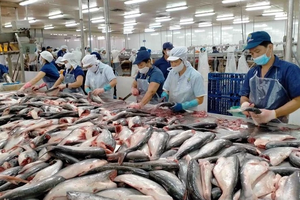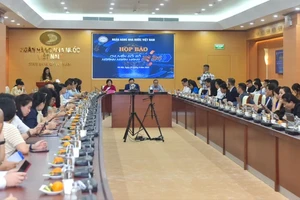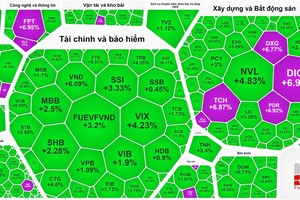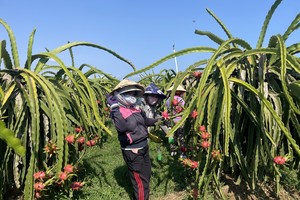The Ministry of Trade has warned that the number of anti-dumping lawsuits against Viet Nam’s export items will continue to increase dramatically once the country becomes a World Trade Organisation member. Therefore, enterprises and industry associations need to improve their knowledge, management, and competitiveness to cope with the increasing threat of anti-dumping action.
According to a report of the Competition Management Department under the Ministry of Trade (MOT), Viet Nam has faced 25 trade remedies so far, including 21 anti-dumping lawsuits and four self-defense lawsuits against Vietnamese exports. The number of anti-dumping lawsuits against Viet Nam’s export items has sharply increased in a very short period since 2002. Viet Nam faced seven cases in 2004, involving many key products such as bicycles, stainless steel door latches and pins, fluorescent lamps among others.
Getting used to anti-dumping

Vice Chairman of the Handicrafts and Wood Industry Association of Ho Chi Minh City (HCMC) Tran Quoc Manh said causes of the rise of anti-dumping cases against Vietnamese products are that Vietnamese enterprises do not have much information about foreign markets; they are usually very passive in anti-dumping cases; they do not know very well about foreign laws on anti-dumping, especially those of America and Europe; enterprises’ competitiveness is still very limited, especially business cooperation and the roles of associations; there is not transparency in doing business, which needs more attention; enterprises are not responsive in making new products, diversifying products to satisfy markets.
Above are general shortcomings of Viet Nam’s export sectors, including export wood processing.
Dr. Tran Du Lich, Director of the HCMC Institute of Economics, has the same opinion but his overview on anti-dumping cases is more positive.
The remedies create bad impacts on economic and social issues. It takes time for enterprises whose products are sued to recover.
However, speaking frankly, only when anti-dumping lawsuits take place, enterprises in general and associations in particular can grow up and mature.
For instance, a lesson could be learned from the anti-dumping lawsuit on catfish (tra and basa) imported into the US in 2002. The role of the Viet Nam Association of Seafood Exporters and Producers (VASEP) was brought into play only after Vietnamese enterprises were sued.
Also in this market, in the anti-dumping lawsuit on shrimps in 2003, the capacity of handling legal issues of enterprises as well as that of VASEP was improved considerably.
In the project “Viet Nam’s international economic integration, ability improvement in anti-dumping”, Andrew Hudson said that the anti-dumping lawsuit on shrimps was more successful with a low import tariff thanks to VASEP’s 2-year preparation, compared with one month in the case of catfish.
Anti-dumping lawsuits will continue to increase
MOT has warned that anti-dumping cases will continue to increase dramatically in Viet Nam’s international economic integration period. Noticeably, there will be more trade lawsuits for Viet Nam’s key export items, causing negative impacts on Viet Nam’s export turnovers such as those of furniture, textile and garment, seafood.
Tran Quoc Manh admits that Viet Nam’s furniture exporters face threats of anti-dumping lawsuits in the US market because of the following reasons: 1. The furniture export turnover is growing at the fastest pace among others in the country. 2. The US’ market growth rate is hot. This issue is very sensitive as Viet Nam’s furniture will occupy over 3% US market shares (the US usually imposes anti-dumping duties based on that number). 3. Viet Nam’s volume of furniture imported into the US is second only to China.
With those reasons, anti-dumping lawsuits against Vietnamese exports are unavoidable.
Distant handling
From the reality, MOT has urged overseas market departments to cooperate with State agencies to closely monitor export growth in assigned markets and provide consultancy on export management to minimize anti-dumping and self-defense lawsuits against Vietnamese export products.
An Anti-dumping Dealing Council will be established soon. It will be one of the two important factors helping MOT have right decisions in dealing lawsuits as well as making anti-dumping lawsuits against products imported into Viet Nam.
Foreign and local experts think that for the time being, in order to avoid risks exporters have to diversify their products and expand export markets.
Associations have to give priority to protecting enterprises in case of suits. Besides, associations have to advise the Government on solutions to its enhancing orientation role and the Government’s warning of facing anti-dumping lawsuits.
Enterprises and associations also have to prepare information and necessary knowledge by improving management qualifications and competitiveness, take the initiative in coping remotely with trade barriers in the progress of global integration when anti-dumping will happen more frequently.
























